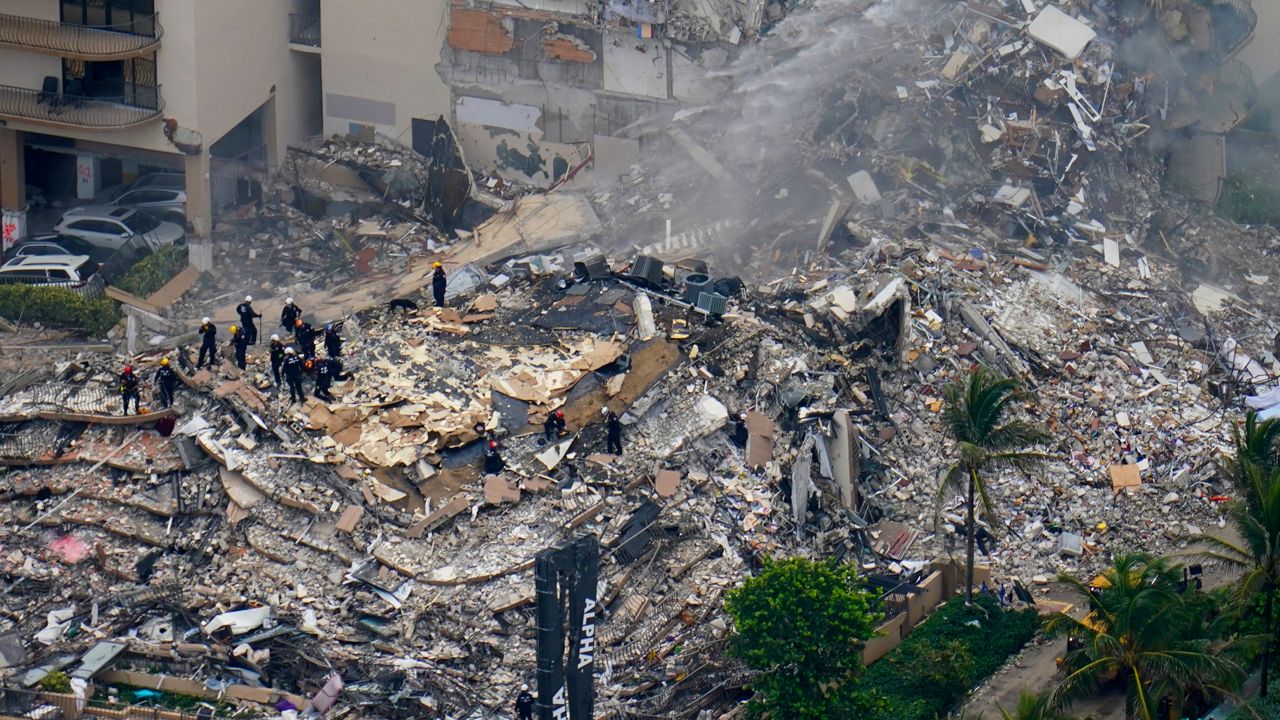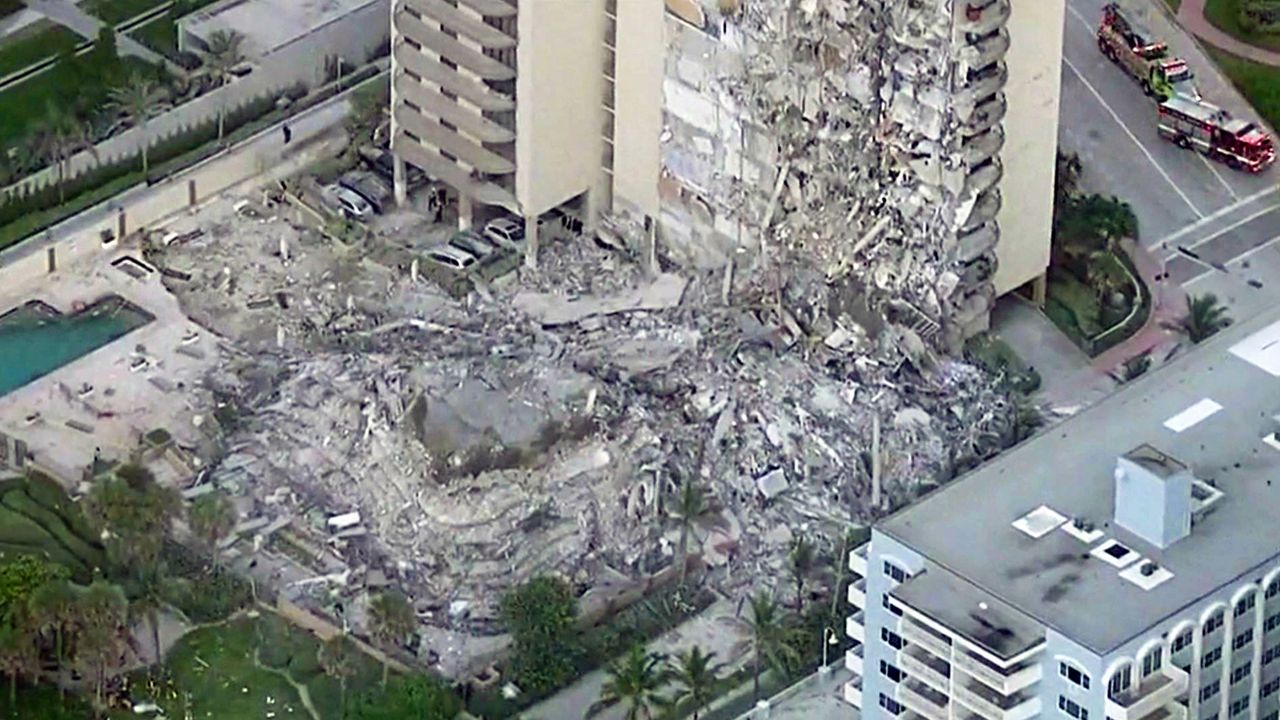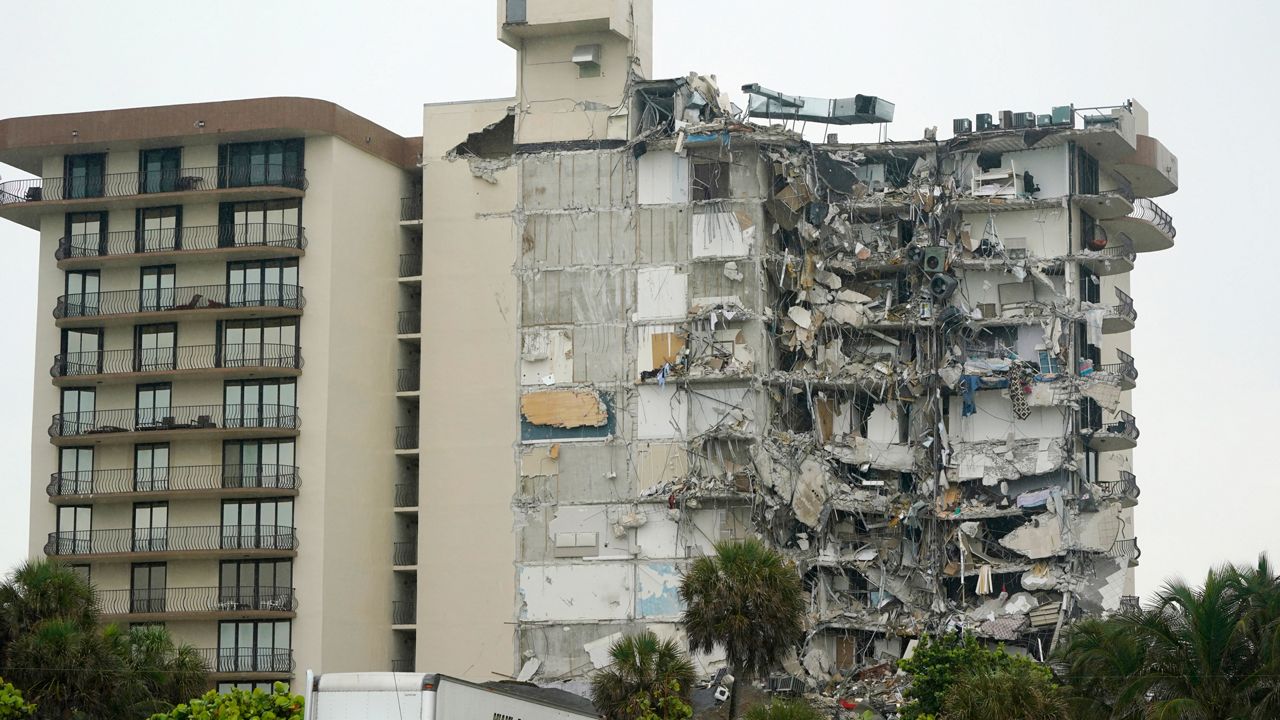ORLANDO, Fla. — Joel Figueroa-Vallines, an Orlando-based forensic structural engineer, says that based on photos he has seen, the South Florida building collapse that has made the nation gasp in shock this week appears to be a product of so-called flat-slab construction.
What You Need To Know
- An Orlando engineer sees construction similarities between the South Florida collapse and a deadly one in 1981
- The Surfside building, like the one in Cocoa Beach, appears to be a product of flat-slab construction, he said
- Flat-slab construction eliminates beams, which can help buildings support their own weight, the engineer said
- RELATED: Search crews work through the night to find survivors amid rubble of Surfside building collapse
That would make it similar to a building in Cocoa Beach that drew similar national attention in 1981, he said.
Both buildings collapsed or partially collapsed, with deadly consequences.
“As far as whether that contributed any to the (South Florida) collapse, we don't know at this point,” Figueroa-Vallines, founder of SEP Engineers, told Spectrum News on Friday. “But what we do know is that a flat-slab system, should there be... a cause that would, in theory, impact those slabs... those structures typically have less redundancy.”
Put another way, he said, flat-slab construction reduces the number of ways, specifically beam support, in which buildings can carry their own weight.
In 1981, the five-story Harbour Cay Condominium building in Cocoa Beach collapsed as workers poured concrete for the roof slab. Eleven workers died.
Early Thursday, about half of the 12-story Champlain Towers South building in Surfside inexplicably collapsed, killing at least four people. By Friday afternoon, almost 160 people were still unaccounted for.
Figueroa-Vallines noted that both structures went down in a so-called pancake or domino effect.
“All that means is that the floors punched through the columns, because essentially there are no beams there,” he said.
He said the 1981 Cocoa Beach collapse inspired a law that required structural engineers and inspectors, including himself, to undergo a qualification program to “enhance the quality control and inspection during construction of 'threshold buildings.' ” Such structures include those over three stories or 50 feet or built for more than 500 people.
He called the law “a proactive way of enhancing quality control to minimize some of those contributing factors” that led to the Cocoa Beach collapse.
Builders find flat-slab construction easier and quicker because the floors connect directly to the building’s columns and walls, and they don’t include beams, Figueroa-Vallines said.
That works well for residential buildings because it creates “nice, clean ceilings” and “very low floor height, so you can actually get more floors constructed with less height,” he said.
Figueroa-Vallines called flat-slab construction an “excellent system” when properly engineered and constructed. The construction type continues “to a degree,” he said.
Of the Surfside building, he said: “I don't have any specific drawings... but from looking at some of those pictures, I could not see any beams framing those slabs. It doesn't mean they're not there, but chances are, based on the floor-to-floor height, that building was probably a flat-slab building.”
In the Cocoa Beach case, the University of North Carolina-Charlotte noted the uncovering of “numerous design errors,” including slab width that fell under code.
In the partial collapse this week, news reports have cited human error and corrosion of structural steel among possible reasons and have noted sinking ground at the site of the building.
But Figueroa-Vallines emphasized to Spectrum News that he was hesitant to speculate on the cause.
“It's a cause-and-effect thing,” he said. “So when something collapses, the collapse is the effect. The cause of it is yet to be determined. And there could be many contributing factors why there would be only a partial collapse.”








